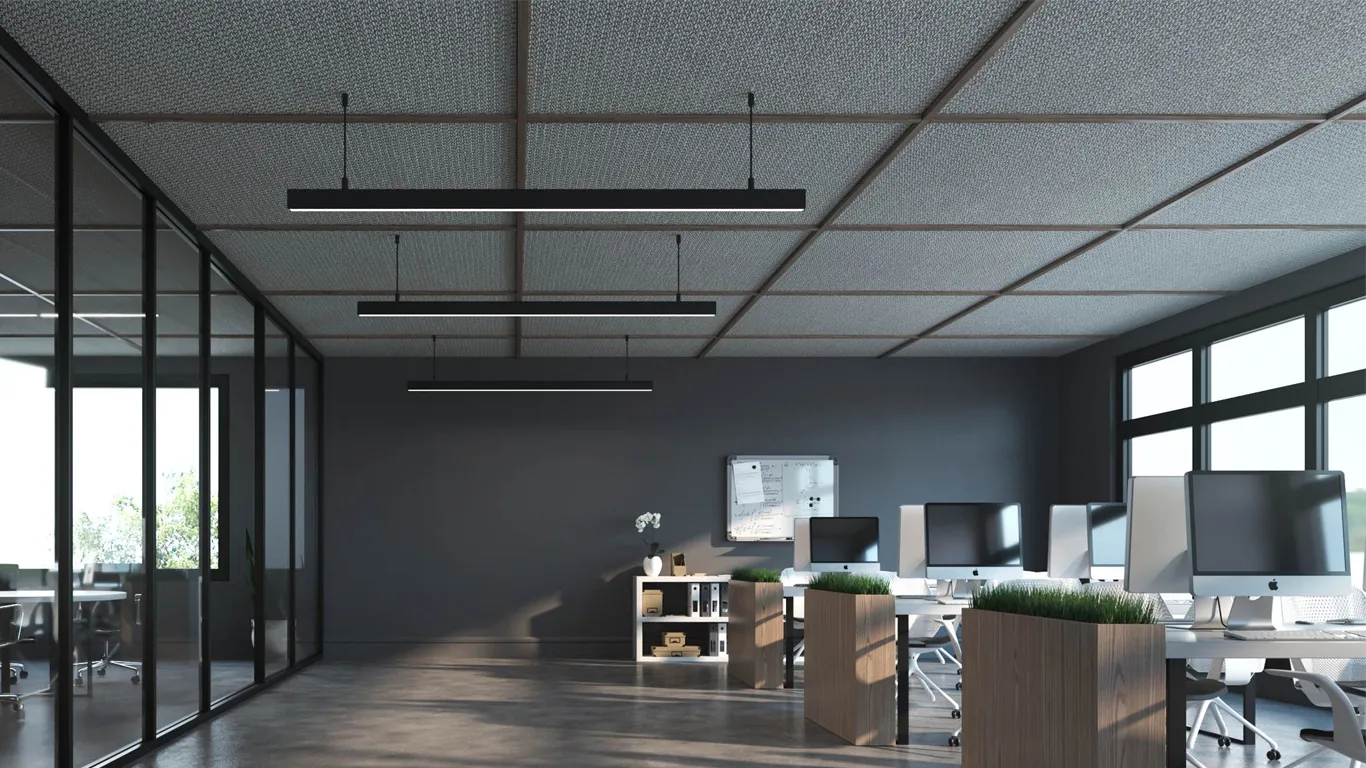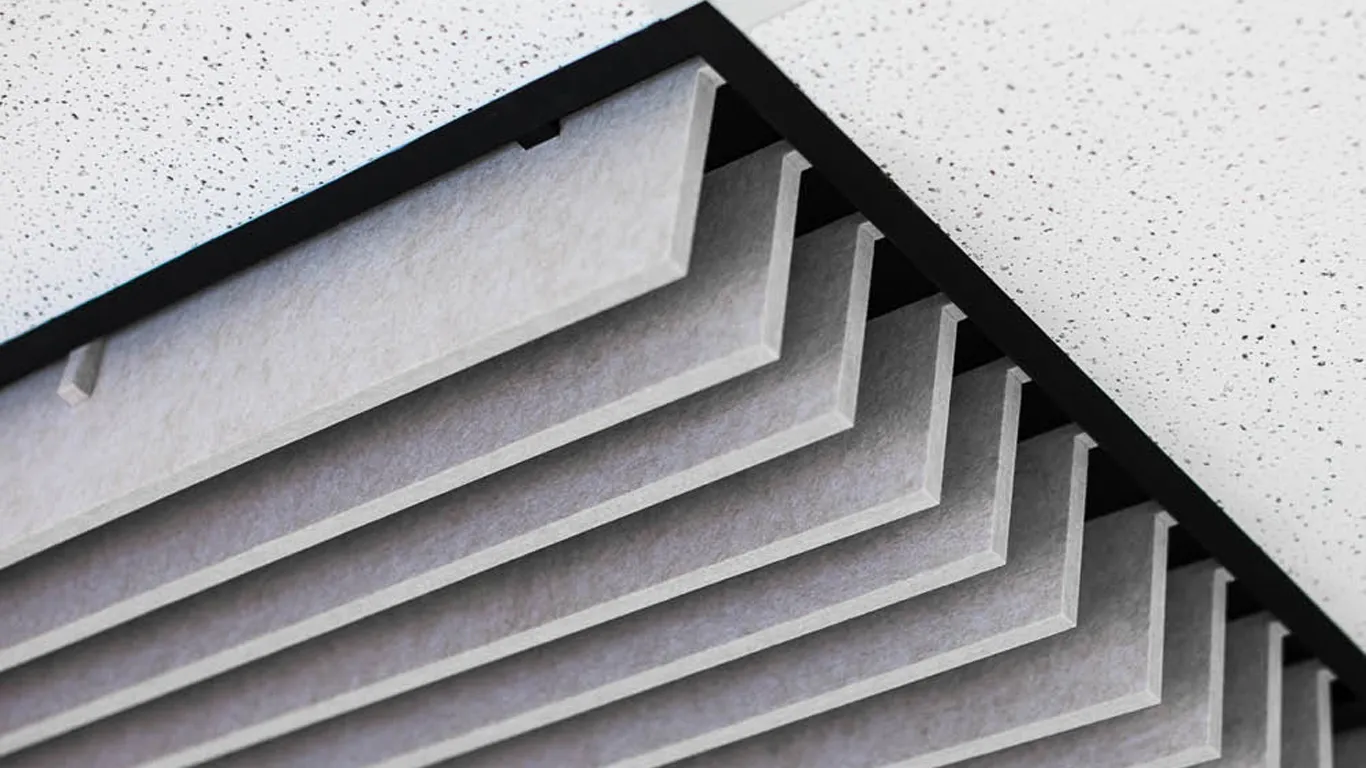Acoustic ceiling tiles are a popular choice in various settings, including offices, schools, studios, and homes, due to their sound-absorbing properties and aesthetic appeal. However, like any other component of your interior space, they require regular maintenance to keep them looking new and functioning effectively. At Harlie Harper, we believe in the longevity and performance of our products, and with the right care, your acoustic ceiling tiles can continue to enhance your space for years to come. This comprehensive guide covers the best practices for maintaining your acoustic ceiling tiles, from routine cleaning to handling damage and preventing discoloration.
Acoustic ceiling tiles are an investment in both the aesthetics and functionality of your space. With proper maintenance, you can keep them looking new and performing effectively for years to come. Regular cleaning, timely repairs, and preventative measures against moisture and discoloration are key to preserving the quality of your acoustic ceiling tiles.

The Importance of Regular Maintenance
Maintaining acoustic ceiling tiles is not just about preserving their appearance but also about ensuring their acoustic performance. Over time, dust, dirt, and other contaminants can accumulate on the surface of the tiles, reducing their ability to absorb sound effectively. Regular maintenance helps to:
- Preserve Acoustic Properties: Clean tiles maintain their sound-absorbing qualities, ensuring that your space continues to benefit from reduced noise levels and improved sound quality.
- Enhance Aesthetic Appeal: Regular cleaning and care prevent the buildup of dust and stains, keeping your ceiling tiles looking fresh and new.
- Extend Longevity: Proper maintenance can prolong the life of your acoustic ceiling tiles, protecting your investment and reducing the need for frequent replacements.
Routine Cleaning of Acoustic Ceiling Tiles
Routine cleaning is essential for keeping your acoustic ceiling tiles in top condition. The frequency of cleaning depends on the environment in which the tiles are installed. For example, tiles in a busy office or school may require more frequent cleaning than those in a home studio.
Materials Needed:
- Soft cloth or microfiber cloth
- Vacuum cleaner with a brush attachment
- Mild detergent or cleaning solution
- Warm water
- Ladder or scaffold

Steps:
- Dusting: Start by dusting the tiles with a soft cloth or microfiber cloth. Gently wipe the surface to remove loose dust and dirt. For areas that are hard to reach, use a vacuum cleaner with a brush attachment to gently vacuum the tiles. This method is particularly effective for textured tiles.
- Spot Cleaning: For stains or spots, mix a small amount of mild detergent with warm water. Dip a soft cloth in the solution, wring it out to remove excess water, and gently dab the stained area. Avoid rubbing, as this can spread the stain or damage the tile’s surface. After cleaning, use a clean cloth dampened with water to remove any soap residue.
- Deep Cleaning: If the tiles are heavily soiled or stained, a deep cleaning may be necessary. In such cases, you may use a slightly stronger cleaning solution or consult the tile manufacturer for recommended products. Apply the cleaning solution with a soft cloth, then rinse thoroughly with water. Ensure the tiles are dried completely to prevent water stains.
- Drying: After cleaning, allow the tiles to air dry completely. If moisture is left on the tiles, it can lead to water stains or damage the tile material over time. Use a fan or open windows to improve air circulation and speed up the drying process if necessary.
Handling Damage and Repairs
Despite your best efforts, acoustic ceiling tiles may occasionally suffer damage, such as cracks, chips, or sagging. Addressing these issues promptly is crucial to maintaining the appearance and functionality of your ceiling.
Common Issues:
- Cracks or Chips: Small cracks or chips can occur due to accidental impact or environmental factors. To repair minor damage, use a patching compound suitable for the tile material. Apply the compound with a putty knife, smooth it out, and allow it to dry before sanding and painting if necessary.
- Sagging Tiles: Sagging tiles are often caused by moisture exposure or improper installation. To fix a sagging tile, first, identify the cause. If moisture is the issue, address the source of the moisture and replace any damaged tiles. If the tile has sagged due to installation issues, you may need to adjust the grid system or add additional support.
- Discoloration: Discoloration is a common issue, particularly in areas with high humidity or where tiles are exposed to smoke or pollutants. To restore the appearance of discolored tiles, consider repainting them with a suitable ceiling paint. Ensure the paint is compatible with the tile material and does not affect the acoustic properties.

Preventing Moisture Damage
Moisture is one of the most significant threats to acoustic ceiling tiles, leading to staining, warping, and mold growth. Preventing moisture damage is essential to keeping your tiles looking new and functioning effectively.
Tips for Moisture Prevention:
- Control Humidity Levels: Maintain a consistent indoor humidity level, ideally between 30% and 50%. Use a dehumidifier in areas prone to high humidity, such as basements or bathrooms.
- Address Leaks Promptly: If you notice any signs of water leakage, such as water stains or damp spots on the ceiling tiles, address the issue immediately. Repair any roof or plumbing leaks to prevent further damage to the tiles.
- Improve Ventilation: Ensure that the space is well-ventilated to prevent moisture buildup. Use exhaust fans in bathrooms and kitchens, and consider installing additional vents if necessary.
- Use Moisture-Resistant Tiles: In areas with high moisture exposure, consider using moisture-resistant acoustic ceiling tiles. These tiles are specially designed to withstand humidity and are less likely to warp or stain.
Protecting Against Discoloration
Discoloration can occur due to various factors, including exposure to sunlight, smoke, or pollutants. To keep your acoustic ceiling tiles looking new, it’s essential to protect them from these elements.
Tips for Preventing Discoloration:
- Minimize Sunlight Exposure: Direct sunlight can cause fading and discoloration of ceiling tiles over time. Use window treatments, such as blinds or curtains, to limit sunlight exposure in rooms with acoustic ceiling tiles.
- Avoid Smoke Exposure: Smoke from cigarettes, candles, or cooking can cause staining and discoloration. If possible, avoid smoking or burning candles in rooms with acoustic ceiling tiles. Use exhaust fans or air purifiers to reduce smoke and pollutant levels in the air.
- Regular Cleaning: Regularly clean the tiles to remove dust, dirt, and other particles that can contribute to discoloration. Promptly clean any spills or stains to prevent them from setting in.

Maintenance Best Practices
In addition to regular cleaning and damage repair, adopting some best practices can help ensure that your acoustic ceiling tiles remain in excellent condition.
Regular Inspections:
- Monthly Checks: Perform a visual inspection of the tiles at least once a month to identify any signs of damage, discoloration, or moisture issues. Early detection allows for prompt action, preventing more significant problems down the line.
Professional Maintenance:
- Professional Cleaning: For large or hard-to-reach areas, consider hiring professional cleaners who specialize in acoustic ceiling maintenance. They have the tools and expertise to clean and maintain the tiles without damaging them.
- Repainting or Refinishing: If the tiles are heavily stained or discolored, professional repainting or refinishing may be necessary. Ensure that any products used are compatible with the tile material and do not compromise their acoustic properties.
At Harlie Harper, we are dedicated to providing high-quality acoustic ceiling solutions that meet the needs of our customers. By following the maintenance tips outlined in this guide, you can ensure that your acoustic ceiling tiles continue to enhance your space, providing both beauty and sound control. Whether you’re maintaining a commercial space, a studio, or a home office, taking care of your acoustic ceiling tiles will protect your investment and keep your environment comfortable and stylish.




